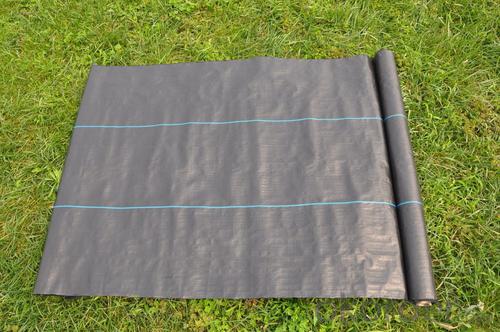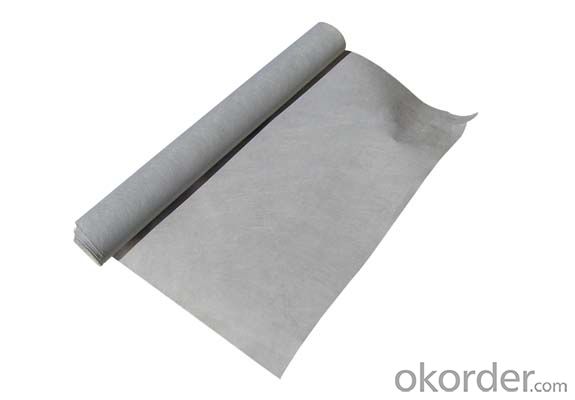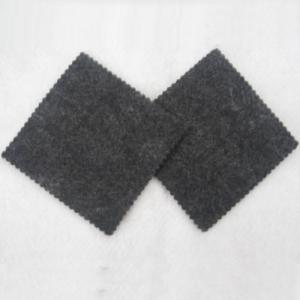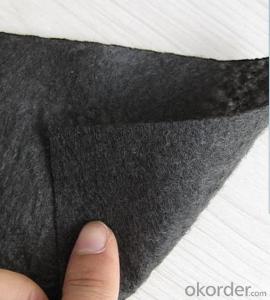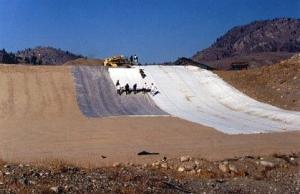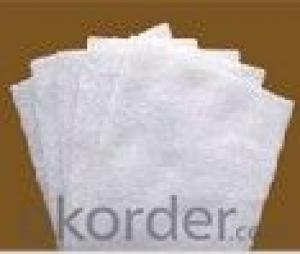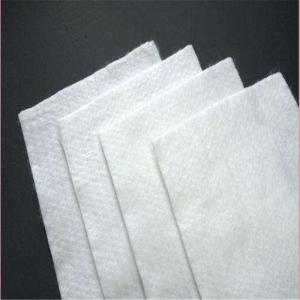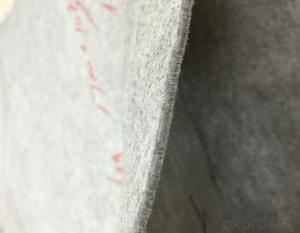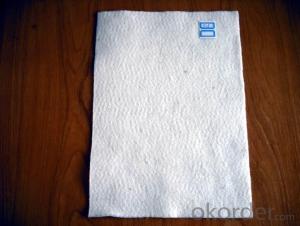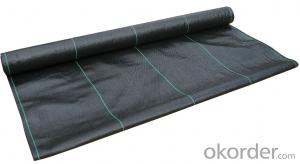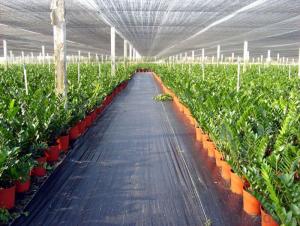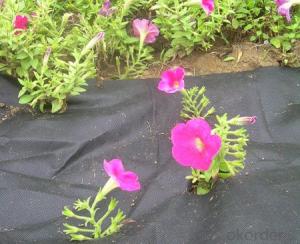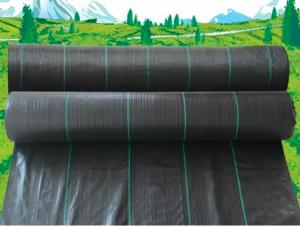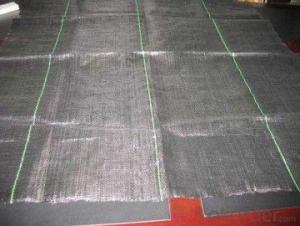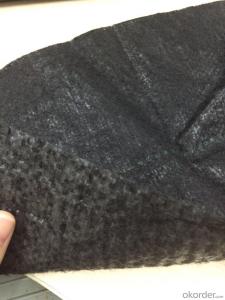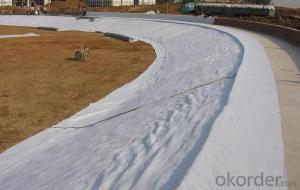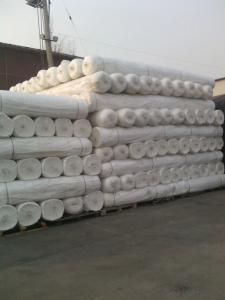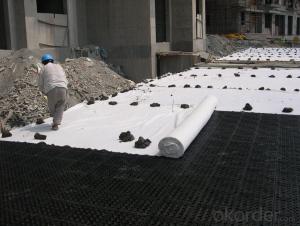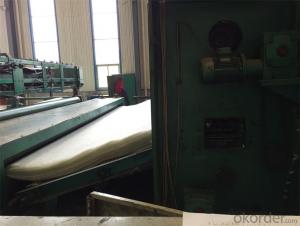Lowes Non Woven Geotextile Fabric / PP Woven Fabric / Groundcover / Weed Mat Fabric
- Loading Port:
- China main port
- Payment Terms:
- TT OR LC
- Min Order Qty:
- 5000 m²
- Supply Capability:
- 1000000 m²/month
OKorder Service Pledge
OKorder Financial Service
You Might Also Like
Introduction
Geotextiles are composed from synthetic polypropylene/polyester fibres through a mechanical process of needling the fabric and adding, when necessary, a thermo fused process, resulting in a uniform porous structure with excellent tensile strength and chemical deterioration.
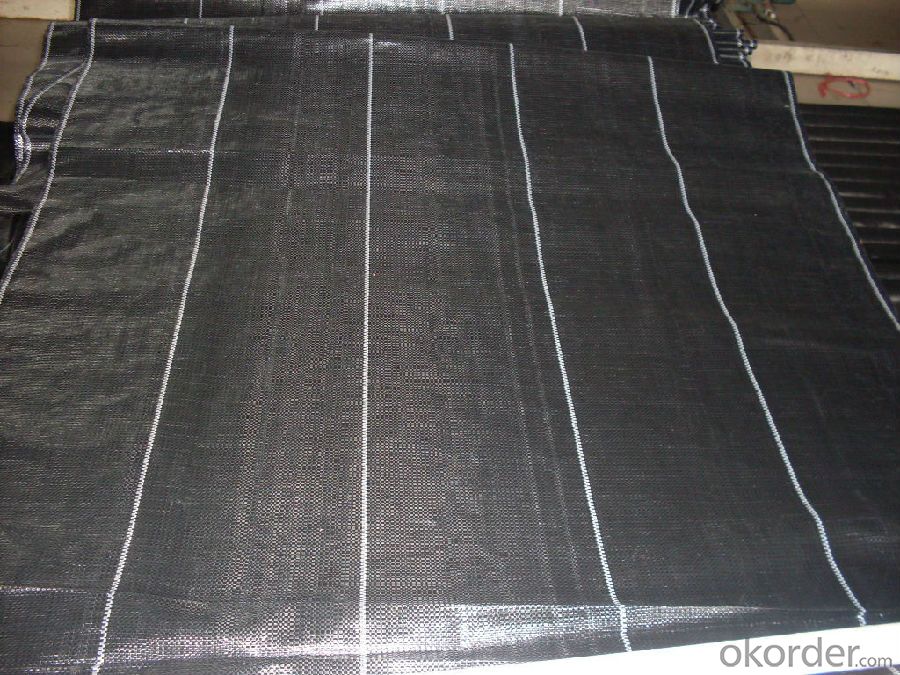
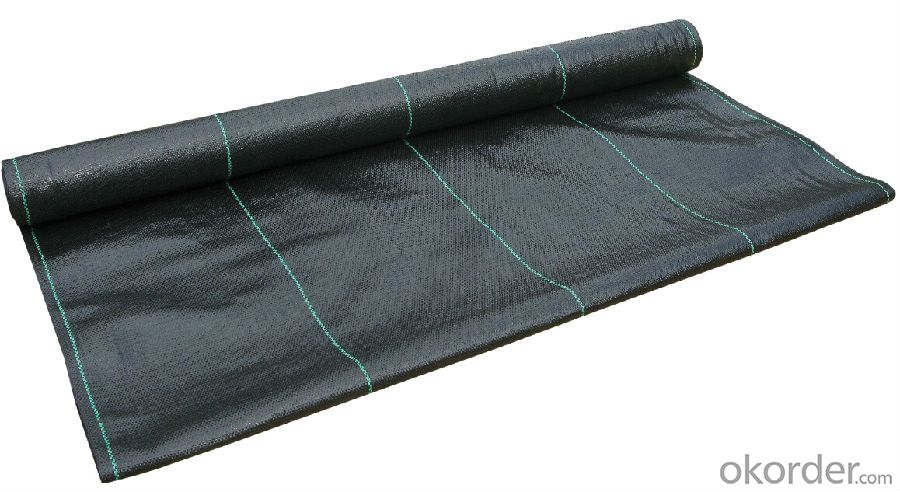
Specification
1) Weight / Mass: 75g/m2-400g/m2 .
2) Width: Within 8 m (1m-8m)
3) Length: 50m-100m/roll (as request)
4) Material: PP
5) Color: Black , white , grey, others
6) Certificate: CE/ISO9001, ISO14001 .
7) Manufacturing method: nonwoven / woven.
8) The biggest geotextile manufacturer/factory in China for many years . The equipment is introduced from Germany.
9) This geotextile can be made of polypropylene (PP).
10) The mass is available from 75g/m² to 400g/m² and the width available from 1.0m-8m, monolayer or multilayer (reinforcement geotextiles), long fiber or short fiber.
Application
Major functions: Separation, filtration, drainage, reinforcement, protection, and liquid barrier
1) Filtration
The filtration layer of the dykes, river canal, seacoast, concrete slope, retaining walls. At the same time of preventing the clay granule from passing, it allows the water and the gas pass through freely.
2) Separation:
The isolation of the railway dregs and the roadbed, roadbed and the soft base, surface of the airdrome and parking lot and the groundsill, different dam materials. It isolates the soil and the gravel of two kinds different granule pathway from the groundsill or other buildings.
3 )Reinforcement:
The highway, railway, soil-stone dam, breakwater, airport, backfill soil of retaining wall, slope protection, etc in which distributes the earth stress, prevents the side-displacement of the earth body and improves the earth body stability.
4 )Protection
It prevents the bank from being washed out, protects the bank and the bottom, prevents the water and soil from being washed away.
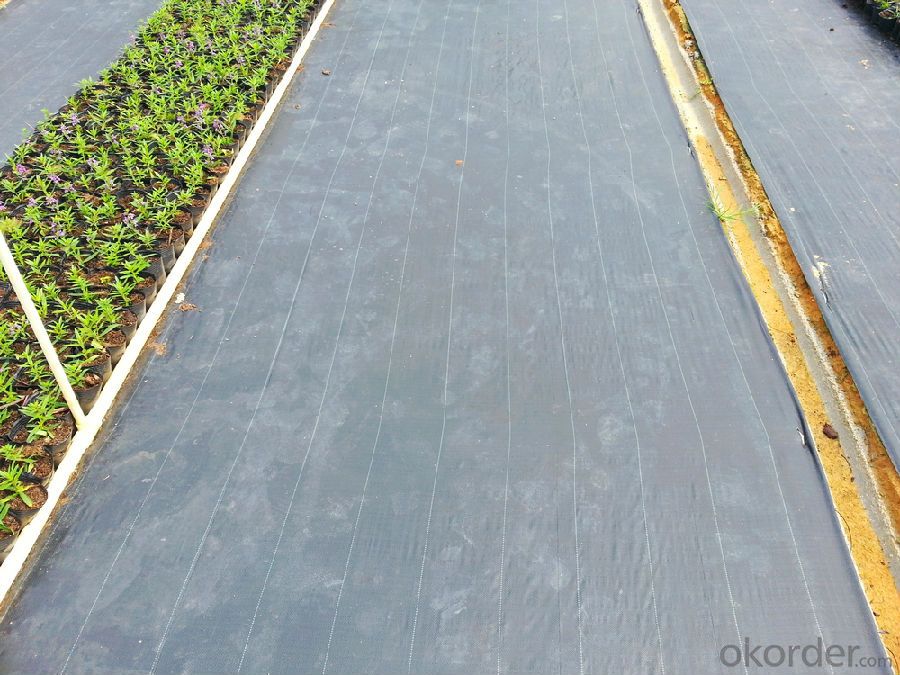
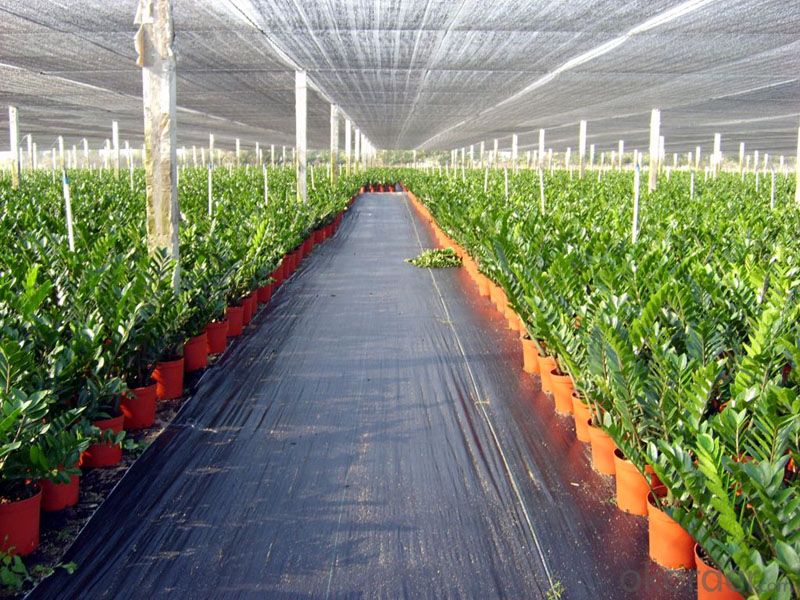
FAQ:
Q1: What is your minimum order quantity?
A:The minimum order quantity is 5000 ,but it is negotiable.
Q2:What is your payment terms?
A: T/T,Western Union,Paypal,L/C...
Waiting to cooperate with you!
- Q: How do geotextiles contribute to the sustainability of construction projects?
- Geotextiles contribute to the sustainability of construction projects in several ways. Firstly, they can be used as a substitute for traditional materials, such as gravel or sand, which reduces the demand for natural resources and minimizes environmental impact. Secondly, geotextiles improve soil stability and prevent erosion, ensuring the longevity of structures and reducing the need for costly repairs or replacements. Additionally, these textiles can enhance the efficiency of drainage systems, leading to reduced water consumption and improved water quality. Overall, geotextiles promote sustainable construction practices by conserving resources, enhancing durability, and minimizing environmental degradation.
- Q: How do geotextiles help in stabilizing railroad tracks?
- Geotextiles help in stabilizing railroad tracks by providing reinforcement and separation between the subgrade and the ballast. They prevent the mixing of fine particles from the subgrade with the ballast, maintaining its stability and preventing track settlement. Additionally, geotextiles enhance drainage, reducing water accumulation and increasing the overall stability of the railroad tracks.
- Q: Sng400-2.5gb / t-1998 geotextile is what the specifications
- SNG400-2.5 refers to the national standard polyester staple acupuncture non-woven geotextile 400g / ㎡, width 2.5m. The standard code for the GB / T-1998 staple fiber nonwoven geotextile is generally the SNG / (1) (2) / (3) - (4) / (5). (1) that the use of raw materials fiber code: PET-polyester, PP-polypropylene, PA-nylon, PV-vinylon, PE-Ethylene (conventional polyester are generally vacant omitted code) (2) that polyester staple fiber non-woven Geotextile per unit area weight. (3) that the composite products in the polyester staple fiber non-woven geotextile weight per unit area, non-composite product vacancies. (4) width, expressed in meters (5) production department number: can express the product more specific characteristics, functions, varieties, sequences, etc., the general vacancy. For example, 2.5m wide 400g / ㎡ polyester staple fiber non-woven geotextile representation of the method can be SNG / PET400-2.5, can also be expressed as SNG400-2.5
- Q: How do geotextiles improve the performance of geocells?
- Geotextiles improve the performance of geocells by providing additional strength, stability, and filtration capabilities. They act as a barrier between the soil and the geocell structure, preventing soil erosion and promoting proper drainage. Geotextiles also enhance load distribution and increase the overall structural integrity of the geocell system, making it more effective in various applications such as soil stabilization, erosion control, and slope protection.
- Q: What are the different types of geotextile installation equipment?
- There are several types of geotextile installation equipment, including but not limited to: 1. Geotextile rollers: These are used to unroll and distribute geotextile fabric smoothly and evenly over the intended area. 2. Geotextile sewing machines: These machines are specifically designed to sew together overlapping sections of geotextile fabric, ensuring a secure and durable installation. 3. Geotextile staplers: These handheld tools are used to secure geotextile fabric to the ground or other surfaces using staples, providing additional stability and preventing shifting. 4. Geotextile cutting tools: These can include scissors, utility knives, or specialized cutting devices, which are used to trim and shape geotextile fabric as needed during installation. 5. Geotextile tensioning devices: These devices are used to apply tension to geotextile fabric during installation, ensuring it remains taut and properly positioned. Overall, these different types of geotextile installation equipment are essential in achieving effective and efficient geotextile installation for various applications.
- Q: How do geotextiles improve the performance of dams?
- Geotextiles improve the performance of dams by providing reinforcement, filtration, and erosion control. They can enhance the stability of the dam structure by acting as a barrier against seepage and offering additional support. Geotextiles also act as a filter to prevent the migration of fine particles through the dam, ensuring its long-term integrity. Additionally, they help in controlling erosion by stabilizing the soil and preventing the washout of material from the dam surface.
- Q: Can geotextiles be used in drainage applications?
- Yes, geotextiles can be used in drainage applications. They are commonly used to improve the performance and longevity of drainage systems by preventing soil erosion, filtering out fine particles, and promoting water flow. Geotextiles can be placed in various drainage applications such as road construction, agricultural drainage, landfills, and erosion control to enhance their effectiveness and efficiency.
- Q: What are the potential drawbacks of using geotextiles?
- One potential drawback of using geotextiles is that they can be expensive to install and require skilled labor for proper installation. Additionally, geotextiles may deteriorate over time due to exposure to UV rays and environmental factors, leading to reduced effectiveness and potential replacement costs. Furthermore, if not properly designed and installed, geotextiles may trap water and cause drainage issues. Lastly, geotextiles are not suitable for all soil types and may not provide the desired level of soil stabilization or erosion control in certain situations.
- Q: How do geotextiles aid in the reduction of soil settlement?
- Geotextiles aid in the reduction of soil settlement by providing a separation layer between two soil layers, preventing intermixing and consolidation. This separation minimizes the migration of fine particles and water, maintaining the stability and integrity of the soil layers, ultimately reducing settlement.
- Q: What are the factors that affect the strength of geotextiles?
- The factors that affect the strength of geotextiles include the material composition and tensile properties of the geotextile itself, the construction and weaving techniques used, the thickness and weight of the geotextile, and the environmental conditions such as temperature, humidity, and exposure to chemicals or UV radiation. Additionally, factors such as installation methods, loadings, and the presence of any contaminants or puncture objects can also impact the strength of geotextiles.
Send your message to us
Lowes Non Woven Geotextile Fabric / PP Woven Fabric / Groundcover / Weed Mat Fabric
- Loading Port:
- China main port
- Payment Terms:
- TT OR LC
- Min Order Qty:
- 5000 m²
- Supply Capability:
- 1000000 m²/month
OKorder Service Pledge
OKorder Financial Service
Similar products
Hot products
Hot Searches
Related keywords






